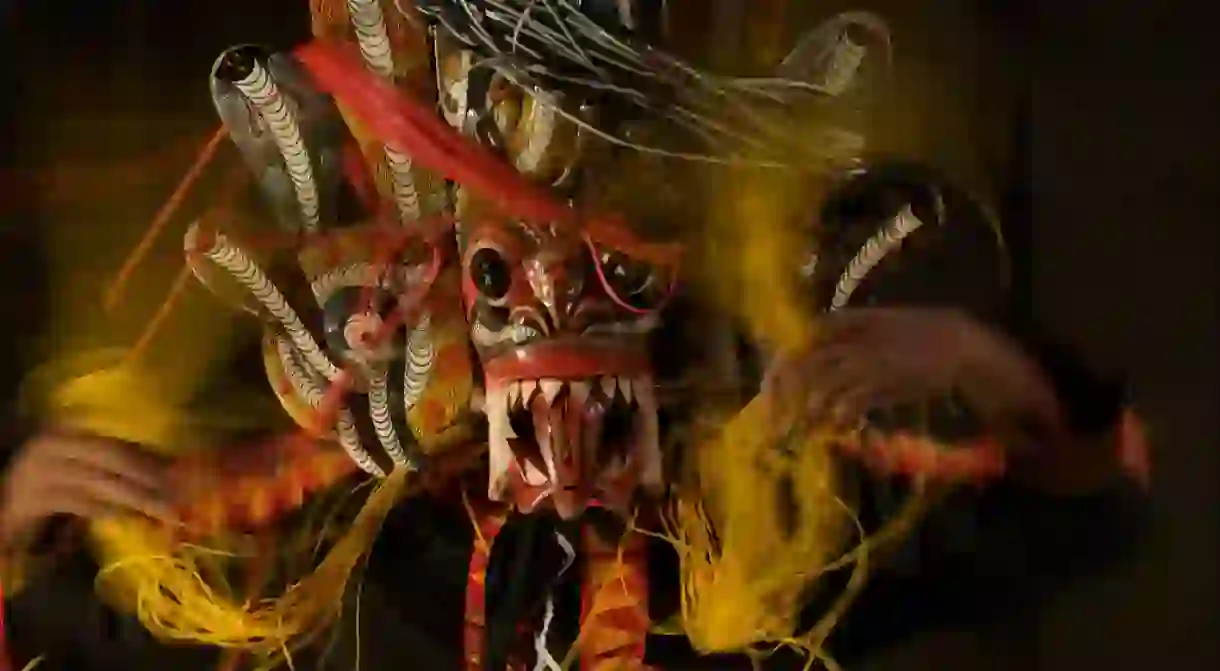The Legends and Rituals of Sri Lanka’s Masked Dances

The popular Kandyan dances have brought Sri Lankan traditions to a wider international audience, and revealed the many more mythological legends in this ‘land of a thousand dances’. With the starting point of Galle’s historic mask-carving hub, Ambalangoda, a dramatic voyage linking to exorcism and local demons unravels.

The many varieties of Sri Lankan dance each have their own cultural resonance, and contemporary meaning; ves dance, the most popular of Kandyan dances, with its regal headgear and elaborate traditional costumes, evolved from an ancient purification ritual. Pantheru, on the other hand, are dance rites celebrating triumph in the battlefield. But down in the Sri Lankan low country, things often get far more sinister. Along with traditional comic folk plays like Kolam dances, come Sanni Yakuma, healing liturgies used to liberate people from their sickness — physical or psychological — caused by unscrupulous, hideous demons.
The Art of the Grotesque: The Ariyapala Mask Museum
The Ambalangoda Mask Museum, containing the museum’s main space, a workshop and a small library loaded with anthropological material on masked performances, has been a popular cultural stop in Sri Lanka since 1987. Officially named Ariyapala & Sons, it reflects the efforts of a family to preserve the traditions of masks and dancing over the course of five generations. The family has single-handedly undertaken the task of recreating a complete collection that mirrors the rich tradition of the coastal areas — a total of 120 masks that, due to the lack of space, can’t unfortunately all be displayed in the museum. It’s a free, magical ride to the Southern coast’s past, supplemented by the in-depth commentary of the English-speaking guides and enhanced by dioramas, giving a visual display of how they were used in performances.

One can see the craftsmen working their way through the grotesque expressions of the villainous demons and the comic grimaces of the good-natured kolam folk — which you can find for sale in the shop. Prices are decidedly high, but though cheap reproductions are abundant around Sri Lanka, these are true originals. They are made out of the local Kaduru tree (nux vomica) timbre, through a lengthy process that involves seasoning and durable coloring. Most importantly, each mask is linked to a particular folktale and characters with which carvers have to mentally connect — a task that often requires a much wider traditional and philosophical education and understanding.
Eighteen Degrees of Separation: How to Escape a Demon with Sanni Yakuma
From deafness to cholera and the fear of death, eighteen physical and psychological diseases were attributed to the local demons, which are known as sanni in Sinhalese tradition, and these were exorcised by eighteen equivalent masked dances, called ‘sanni yakuma’. The evil so expressively depicted in apotropaic Sri Lankan masks was exorcised in three ritualistic steps: a specialist would lure in a demon with offerings, upon his arrival, the ‘doctor’ would make him promise to leave the patient’s body — until, finally, he was politely sent away, performing one last dance. In Sri Lankan dance these demons would each be depicted through eighteen wood-carved faces, accompanying which would be the chief of Sanni, himself depicted in the so-called Medicine Masks (Maha Kola).

Comic relief: The Folktales of Kolam Maduwa
Kolam masks were designed to perform comic folk Kolam dances in the West and South-West region of the country — and the Ariyapala Wijesuriya family is among the few that has maintained this tradition in the region. Legend says these masks were created to entertain the pregnant wife of King Maha Sammaha, the first king of human beings, for which purpose they were sent, along with lyrics, to the royal garden by God Vishvakarma (the God of Craftsmen). In order to stay faithful to ancient mythologies, every dance includes the masked King & Queen, who overlook the scene. Albeit benevolent, Kolam masks can be equally, and hilariously, grotesque. The dances also reflect a more down-to-earth side of Sinhalese tradition, narrating the lives of royal servants.
Raksha masks are the final facet of the Kolam ritual, and they are a tribute to the Rakshasas, a race that earlier ruled Sri Lanka and could assume 24 different forms. Unfortunately, only a few of those are performed — among them, the Cobra (Naga Raksha), the Bird (Gurulu Raksha) and, spookily enough, the Demon of Death (Maru Raksha).













